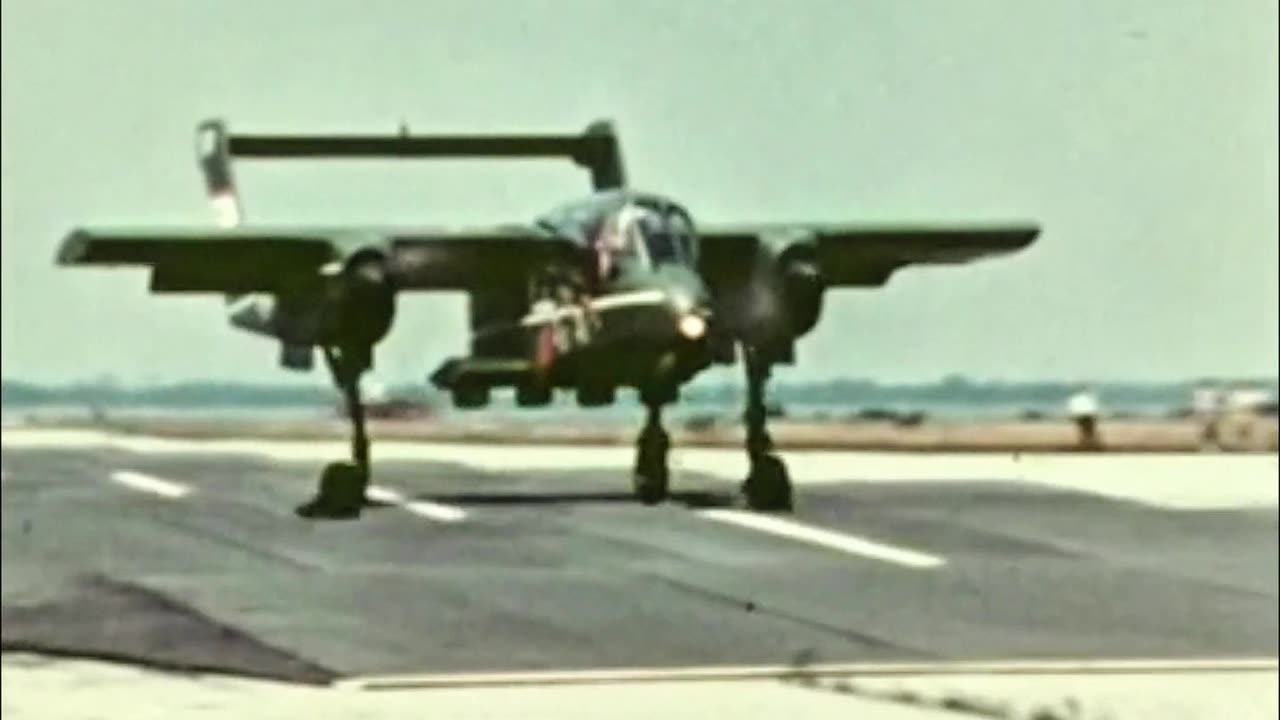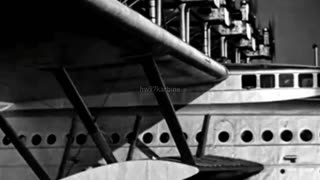Premium Only Content

North American Rockwell YOV-10A Bronco during Tri-Service trials in 1967
The North American Rockwell OV-10 Bronco is a light attack and observation aircraft that was developed through the United States Marine Corps Light Armed Reconnaissance Aircraft (LARA) program in the 1960s as a counter-insurgency (COIN) and forward air control (FAC) aircraft. The original concept was for a rugged, simple, multi-faceted, close air support aircraft that could handle armed reconnaissance and light strikes while operating with high loitering times from short and rugged runways.
Externally, the design of the Bronco was very unique in nature, sporting a high-mounted, straight monoplane wing assembly. Each wing fitted underslung engine nacelles with powerplants mounting a three-bladed propeller systems. The undercarriage was conventional with two main gears (fitted with single wheels) retracting into each engine nacelle underside and a nose gear (also fitting a single wheel)retracting forward. The Bronco maintained a twin boom layout extending aft to two vertical tail fins with the booms joined by a high-mounted horizontal tailplane. The fuselage was made up of a central nacelle fitted between the engines and positioned at the middle of the wing span.
The pilot and co-pilot sat in tandem in a full-windowed "greenhouse-style" cockpit with generally great visibility from any direction but to the rear. The cockpit was positioned as such that forward seat was held out well past the engines themselves. Both cockpit positions were afforded ejection seats for improved crew survivability ( helped along by the Broncos inherently rugged design and construction). The fuselage nacelle featured a cabin area at rear with space for could fit two medical litters and one medical attendant or five combat-ready infantrymen. Up to 3,200lbs of supplies could also be taken aboard if need be.
A "tri-service" specification for the Light Armed Reconnaissance Aircraft (LARA) was approved by the U.S. Navy, Marine Corps and Air Force was issued in late 1963. The specification called for a twin-engine, two-man aircraft that could carry at least 2,400 pounds of cargo. Various armaments to be carried included four 7.62 mm machine guns with 2,000 rounds, external weapons including a 20 mm gun pod and various sized rockets.
-
 2:11
2:11
hw97karbine
15 days agoDornier Do X twelve-engined behemoth very much putting the "boat" in "flying boat"
561 -
 29:27
29:27
James Klüg
1 day agoAmericans Remembering Charlie Kirk
6041 -
 48:15
48:15
SouthernbelleReacts
1 day ago $6.38 earnedWeapons (2025) REACTION | Josh Brolin, Julia Garner, Alden Ehrenreich | Horror-Mystery Thriller
18.5K20 -
 39:36
39:36
mizery
4 days ago $0.18 earnedI Mastered Fortnite in 30 Days
6.25K6 -
 25:50
25:50
ChopstickTravel
18 days ago $1.81 earned24 Hours With Sri Lanka’s Vedda People!! (Barehand Honey Harvest)
15K5 -
 8:13
8:13
Danny Rayes
1 day ago $0.81 earnedMost Hated Teacher on Tiktok
8.13K7 -
 15:31
15:31
Chris Harden
9 days ago $2.57 earnedWhat Happened to Kewanee, Illinois?
11.5K8 -
 10:13
10:13
JohnXSantos
1 day ago $0.49 earnedThis AI Tool Makes Product Manufacturing 10X Smarter (FOR FREE)
7.44K3 -
 16:28
16:28
Artur Stone Garage
12 days ago $0.68 earned$1000 AUDI A4 — WILL IT START After 10 Years?
11.8K1 -
 26:57
26:57
Advanced Level Diagnostics
18 days ago $0.45 earned2021 Ram Promaster - No Crank! Key Stuck In Ignition! Diag & Fix!
8K1